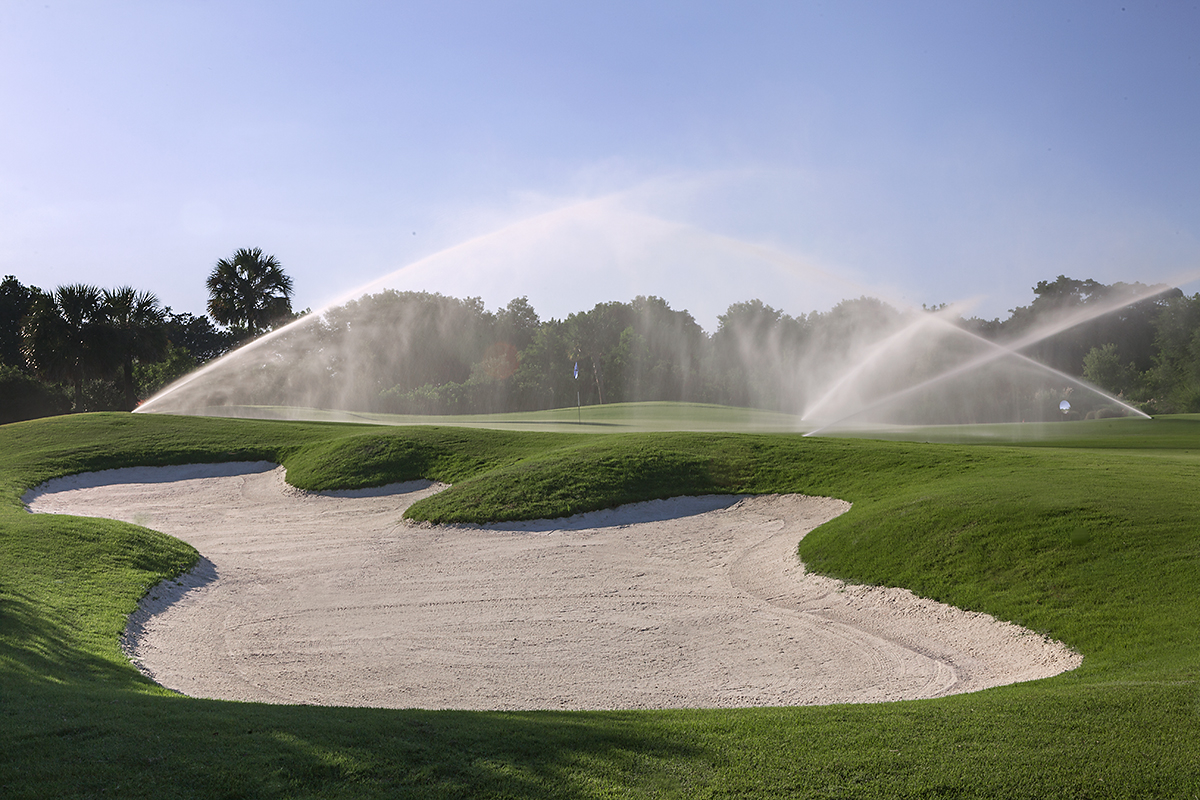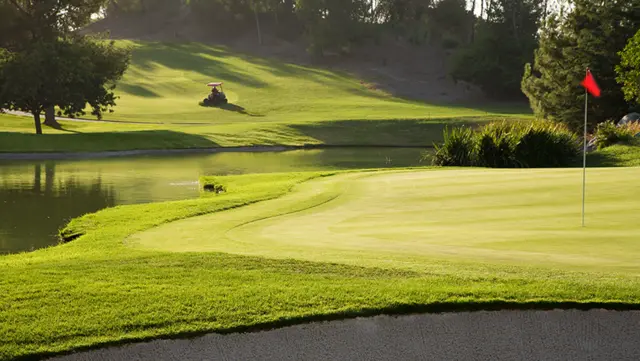
Experts’ Top Five Ways to Conserve Water on Your Golf Course
We asked our golf course maintenance experts’ for their tried and true water conservation solutions.
Drought, abnormally dry conditions, water restrictions—the last few years have been hard on the golf industry. Undoubtedly, no matter where your course is located, you and your team are working to conserve water. To help you get ahead, we’ve rounded up our golf course maintenance experts’ top five, tried and true, water conservation solutions
1. Do an Irrigation Audit
Before you undertake any water conservation efforts, do an audit of your course’s current water situation. Determine water use per acre and make sure your calculations are correct. Map your irrigation system, noting the efficiency and working order of every nozzle and valve. Adjust nozzles and water pressure as necessary, ensure your irrigation system’s programming reflects the changes and plan to address any deficiencies.
According to Ted Horton, BrightView’s Senior Consulting Superintendent, a comprehensive water audit and regularly scheduled maintenance of irrigation systems can reduce annual water usage on a golf course by about 5 to 10 percent.

2. Revisit Your Course’s Cultural and Maintenance Practices
Though it may seem obvious, it’s important to know the water needs of your plants in order to understand how and where to prioritize water use. Once you know that, you can consider adjusting cultural practices to save water. For instance, studies have shown plant growth regulators can cut down on water use by about 11 percent per year. Using wetting agents or soil penetrants also helps ensure the water you are using will be readily absorbed into root systems.
There are other simple steps you can take to help conservation efforts. Make sure your mower blades are sharp and reduce the height of the cut in the rough. You can also aerate and reduce soil compaction to allow water to infiltrate more efficiently. Consider hand watering instead of turning on irrigation heads and wash equipment with pressurized air rather than water. Don’t skip routine golf course maintenance practices. Aeration, sand topdressing, verticutting and a good fertility management program assist with soil compaction and allow for better moisture penetration, saving water usage in the long-term.
3. Use Soil Moisture Sensors
If you’re not already doing so, add soil moisture sensors to your golf course maintenance toolkit. Far more efficient and affordable than in the past, these sensors measure moisture content in turf and enable you to dial in irrigation efforts.
Mike Huck, a water quality and conservation specialist who consults at golf courses nationally, compared good soil moisture sensors to gas gauges. “The information these sensors provide is real time and exact,” he said. “It’s not based on opinion or a guess about the weather.”
Huck told of one Arizona golf client who, following information provided by soil moisture sensors in his turf, turned off irrigation in one zone one night per week. The savings amounted to half a million gallons of water per night.
“His turf didn’t suffer at all,” said Huck. “And over the course of a month, the amount of water and money saved was pretty significant.”
4. Plant Drought Tolerant Turf and/or Consider Turf Conversion
By far one of the most impactful ways to conserve water is through turf reduction and conversion projects. Kevin Neal, BrightView Vice President and Area Director for the West, has seen clubs take several approaches, including installing artificial turf on driving ranges, planting drought tolerant landscaping around bunkers, and converting turf from cool to warm season grasses.
“Just going from something like Rye grass to Bermuda grass can cut water use by as much as 15 percent,” said Neal. However, as Neal points out, planting a warm season grass that goes dormant in the winter requires a mind shift among clubs and players alike.
“People are getting used to not seeing green grass all the time,” said Neal. “But the reasons behind any turf conversion project need to be communicated clearly so that everyone can get behind and support the decision.”
5. Explore Alternative Water Sources
Being smart about water conservation means being aware of all water sources around you. Alternative sources to consider include wells, ponds, lakes, rivers and streams. Find out about recycled water opportunities in your area. For example, if sewer lines can be tapped into and skimmed, find out how you can do this and whether you can secure this resource for future use.
“Only 30 percent of golf courses are not using potable water, which means a lot still are,” said Ted Horton. “With water becoming ever scarcer, we all need to look at how we are using this precious resource. It’s up to all of us to use water as carefully and efficiently as possible.”
Outstanding Golf Course Maintenance
You set the standard, we make it happen. We’re laser-focused on continuously refining the science, technology, and operations of golf course maintenance so we can bring our clients a competitive advantage and a course their players are proud of.



